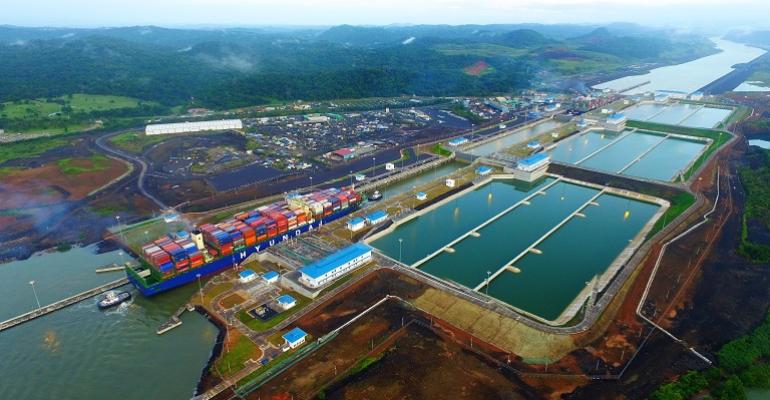As previously reported on Seatrade Maritime News the Panama Canal Authority (ACP) has announced further restrictions to vessels starting with only 22 transits from 1 December and declining to 20 ships on 1 January and just 18 ships from 1 February until further notice, as the water levels decline.
Consultancy Alphaliner reported: “Since Q2 [2023], the maximum draught for ships transiting the Panama Canal has been lowered from 14.94m to 13.41m, which reduces the carrying capacity of neo-panamax ships by up to 1,500 teu.”
ZIM is one of the major carriers affected by the canal’s draught restrictions which the company’s EVP and CFO Xavier Destriau said had become an area of “focus and attention” that was preventing the carrier from meeting its schedules and providing its customers with the reliability that they demand.
ZIM believes that one positive effect of the draught restrictions will be the absorption of excess capacity that is currently flooding the market, but Destriau admitted that the carrier has not seen enough of a slowdown in service rotations to shift the dial on the excess capacity being delivered into the global container shipping industry.
“Today it hasn’t changed the needle too much [on excess capacity] and what is more worrisome for our customers is the lack of visibility and schedule reliability that is quite seriously impacted by the current situation,” said.
ZIM is looking into what it can do to protect its schedule reliability, it has already added two vessels to Asia to US East Coast loop, taking the number of ships in this service from 10 ships to 12, absorbing some capacity.
“We are continuing to explore alternatives to protect schedules,” admitted Destriau as the situation around the Panama Canal appears to develop into more serious delays.
Southeast Asia to Baltimore service will have new larger vessels, but so far the carrier has resisted deploying further vessels to meet the draught restrictions and to maintain schedule reliability.
Listen to a recent episode of the Seatrade Maritime Podcast with Panama Canal Administrator Ricaurte Vasquez Morales
ZIM has so far resisted adding Panama Canal surcharges, however, some of its competitors have decided to cover the extra costs through a levy.
CMA CGM will impose a $150 per teu ‘Panama Adjustment Factor’ (PAF) from 1 January 2024, citing the impact of both the transit restrictions and higher Canal tariffs implemented in January. And MSC has announced a PAF of $297 per teu for its Asia-US East Coast/US Gulf and Asia/Caribbean services transiting the Canal, effective from 15 December, said Alphaliner.
Measures taken to preserve the draught levels, such as the use of water saving basins in the and cross-filling in the panamax locks, levels in the Gatun Lake are said to be “at unprecedented levels for the time of year”.
Unlike bulk carriers and tankers, which have been looking for alternatives to the canal, liner companies have not seen major disruptions in the number of container vessels transiting the Panama Canal, at least up until now.
Hapag-Lloyd CEO Rolf Habben Jansen told Alphaliner that the carrier is closely monitoring the situation to see if one or more loops should be re-routed via the Suez Canal.
Copyright © 2024. All rights reserved. Seatrade, a trading name of Informa Markets (UK) Limited.
Add Seatrade Maritime News to your Google News feed.  |

